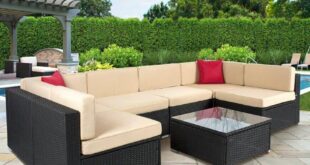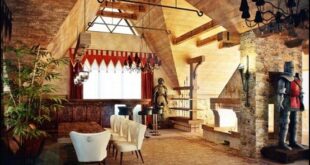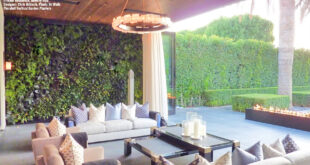If you can afford a little more sound in your home than the buzzing of a mosquito but can’t soundproof your home, there are some decorative ways to increase soundproofing. This is especially useful for those who live in a rented house or apartment where the walls are paper thin and noise regulations are strict, or for those who want to organize a home theater or music studio. There are different ways to make your home soundproof: acoustic panels, curtains, drywall, padding or cork walls – and much more. Acoustic panels are perhaps the most modern idea as many designers create fantastic bright acoustic panels with different patterns that can complement any room. Check out these and other ideas below!
dry stone walls
Noise is vibration. Dampening these vibrations is best done with heavy, dense materials that stop noise in the tracks. When it comes to heaviness, brick and stone are great, but impractical for retrofitting your interior walls. The simplest strategy is to add a second layer of drywall to create a thick, sound-absorbing barrier. No need to add drywall everywhere – you can isolate the noisy room or the quiet room. You’ll need to refinish and repaint your new drywall and likely expand outlets and switch boxes. However, these are relatively easy and inexpensive DIY projects.
Bulky vinyl
Specially made to reduce noise, Bulk Loaded Vinyl (MLV) is a flexible material that comes in 4-foot-wide rolls. It can be hung on walls or installed on floors to muffle noise. Place it between drywall to significantly reduce sound transmission through walls.
acoustic panels
Acoustic panels absorb sound before it can bounce off walls and ceilings. They are designed to improve sound in a room like a home theater but are also helpful in reducing sound transmission through walls. The panels are made of porous expanded polypropylene (PEPP) and are available in various sizes and thicknesses. Most styles for home use are upholstered in fabrics that have dozens of colors to choose from. Some manufacturers offer custom printed fabrics that will turn your sound blocking panel into a piece of wall art. Panels attach with clips or Velcro, and installation is a simple do-it-yourself job.
Other ideas
Adding soft objects to rooms—rugs, curtains, potted plants—reduces vibration and ambient noise. A solid core interior door absorbs sound better than a hollow core door. Add a sweep to reduce aircraft noise. A wooden wall or cork can also absorb excessive noise. So it’s a good idea to add a statement wall made out of such materials.
 decordip Interior Design Ideas
decordip Interior Design Ideas



